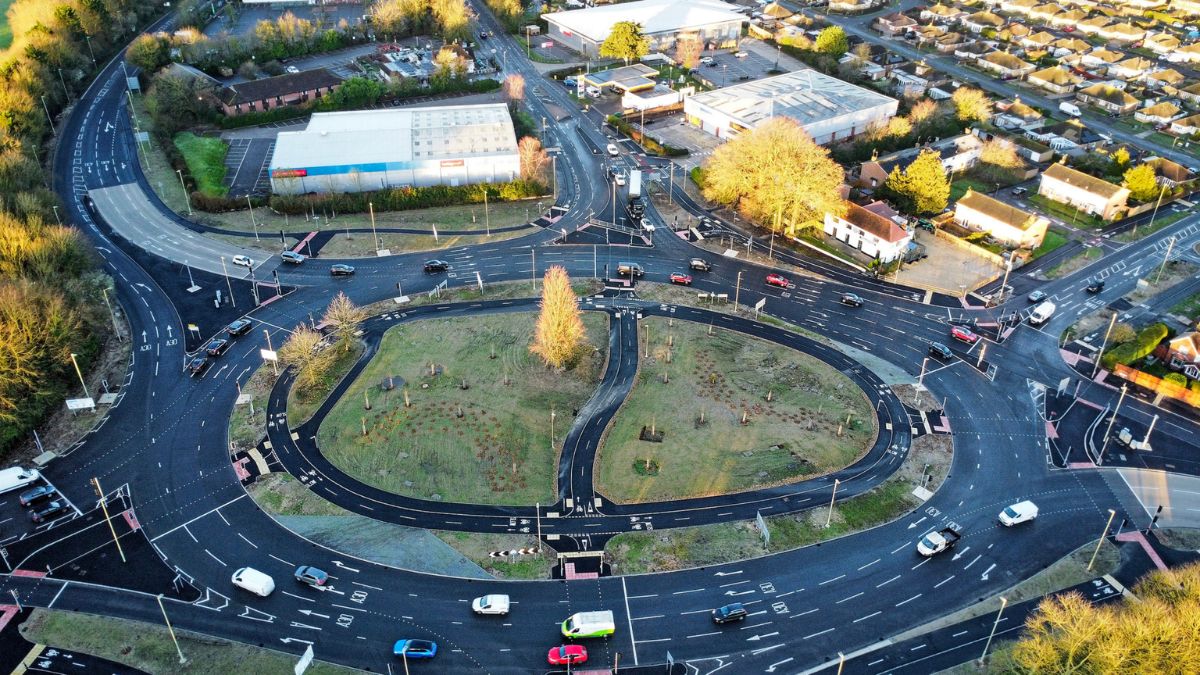Roundabouts and traffic lights have dominated our roads for decades — but a new design is quietly reshaping the way we drive. The Restricted Crossing U-Turn (RCUT) could be the key to safer, smoother travel everywhere.
The Problem with Traditional Intersections
Intersections have long been one of the most dangerous parts of any roadway. Between sharp left turns, fast cross-traffic, and last-minute stops, collisions often occur in the blink of an eye. For years, roundabouts were promoted as the solution — yet in practice, they slow down main roads and create bottlenecks during peak hours.
Overpasses and flyovers can ease the pressure, but they are expensive and take years to complete. In rural areas where smaller roads meet high-speed highways, drivers face even greater risks. A simple left turn can mean crossing several lanes of oncoming traffic — a move that often ends in disaster.
The RCUT Solution: Safer, Smarter, Simpler
The Restricted Crossing U-Turn, or RCUT, takes a different approach. Instead of allowing dangerous left turns or direct crossings, it forces vehicles to make only right turns, then complete their route using safe U-turn lanes further down the road.
Here’s how the system works:
- Vehicles from side roads turn right onto the main highway.
- They travel a short distance — typically between 500 and 1,300 feet.
- A dedicated U-turn lane allows them to safely reverse direction and merge back into traffic.
- If they need to cross the main road, they complete the movement with another right turn.
This simple pattern eliminates risky crossing points, making each movement more predictable and controlled.
Why RCUTs Work: The Numbers Don’t Lie
According to the Federal Highway Administration (FHWA), RCUTs reduce total crashes by up to 54% and injury-related crashes by 70%. These numbers highlight how effective the design is at preventing dangerous interactions between vehicles.
Beyond safety, RCUTs also improve efficiency and reduce costs. They allow traffic to flow more freely, shorten waiting times, and cost far less to build than traditional overpasses. In rural or space-limited environments, they are often the most practical option available.
Challenges and Cultural Habits
No road design is perfect. RCUTs require drivers to rethink their habits, especially in regions accustomed to traditional intersections. The “right-turn-then-U-turn” pattern can feel unfamiliar at first, leading to confusion if signage is unclear.
Public education and clear road markings are essential for successful adoption. In countries such as Argentina, drivers already use similar traffic patterns informally, but without proper infrastructure, safety remains inconsistent. As more cities modernize, overcoming cultural resistance will be key to unlocking the full benefits of RCUTs.
Real Experience: A Safer Turn
Drivers who have used RCUTs often describe the experience as smoother and less stressful. One motorist recalled a close call while making a left turn at a rural intersection, followed by a safer experience just miles away on an RCUT road. “It felt natural,” he said. “No panic, no sudden stops — just a clean, predictable turn.”
Sometimes, a small change in the route can make all the difference.
The Future of Smart Intersections
RCUTs are part of a larger shift toward smarter, data-driven infrastructure. They may not replace every roundabout or light, but where space and safety are concerns, they’re proving to be one of the most effective solutions.
With early results showing fewer crashes, smoother traffic, and higher driver confidence, transportation agencies around the world are beginning to see RCUTs as the future of safer roads.
So next time you find yourself at one, don’t hesitate — that right turn might just be the reason you get home safely.
FAQs
What does RCUT stand for?
RCUT means Restricted Crossing U-Turn — a modern intersection design that reduces dangerous turning movements.
Why is it safer?
It eliminates high-risk left turns and cross-traffic collisions by directing drivers into controlled, one-way movements.
How does it work?
Drivers turn right, travel a short distance, and use a U-turn lane to continue their route safely.
Are RCUTs better than roundabouts?
In rural or high-speed areas, yes — they are often safer, cheaper, and easier to maintain.
Where are RCUTs used?
RCUTs are being adopted across the United States, Europe, and parts of South America with strong early success.
